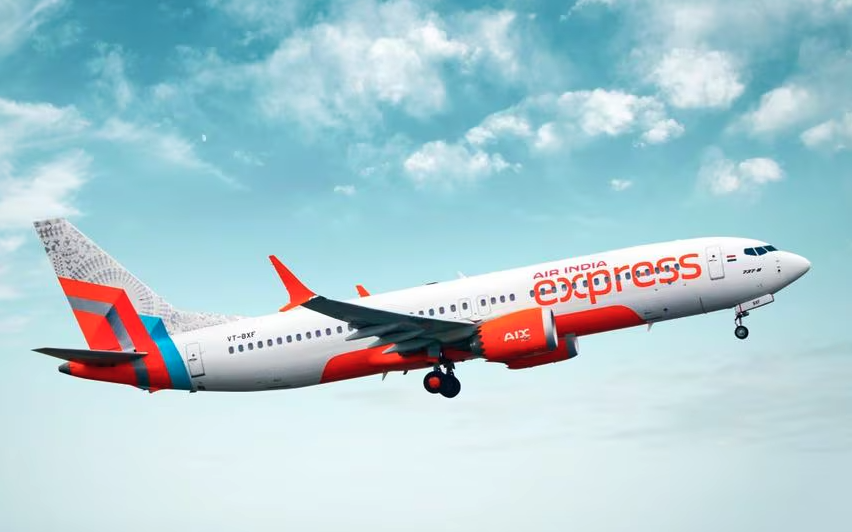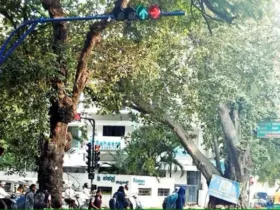On December 17, 2024, Air India Express Flight IX 471, operating between Cochin International Airport (COK) and Bahrain International Airport (BAH), encountered an unexpected technical issue shortly after takeoff, forcing the flight to return to Cochin for an emergency landing. The Air India airline’s prompt response to the situation and the safe return of the aircraft to the airport demonstrate the critical importance of stringent safety protocols, effective communication, and quick thinking in managing such incidents. This incident underscores not only the Air India airline’s commitment to safety but also the rigorous safety measures implemented at Cochin International Airport, as well as the professional approach taken by both the airline and airport authorities.
Details of the Incident: Flight IX 471’s Journey
Air India Express Flight IX 471 was scheduled to depart Cochin International Airport at 10:45 AM IST for Bahrain International Airport. The flight was being operated by a Boeing 737-800 aircraft, which had a seating capacity of around 180 passengers. Onboard were 105 passengers and 8 crew members, including the pilot and cabin crew. The aircraft took off from Cochin around 10:45 AM, heading towards Bahrain. Shortly after takeoff, the flight crew received a warning from the aircraft’s systems indicating a potential issue with one of the tyres.
Upon further assessment, it was discovered that debris from a tyre had been found on the runway shortly after the aircraft’s departure, leading the crew to suspect that one of the tyres may have been damaged during takeoff. This raised immediate safety concerns, especially regarding the integrity of the aircraft’s tyres and the possibility of further issues during the flight. Given the importance of tyre health in aircraft operations, the flight crew decided to take the cautious approach and return to Cochin International Airport.
The Decision to Return: Emergency Protocols in Action
As the flight crew evaluated the situation, they quickly determined that the safest course of action was to return to Cochin International Airport. Given that the aircraft had just taken off, it was determined that a precautionary return would minimize the risks to passengers and crew. The crew coordinated with air traffic control at Cochin International Airport, who immediately declared an emergency situation. Emergency response protocols were swiftly activated at the airport, with fire and rescue teams being positioned on standby for the aircraft’s return.
During the return, the flight crew initiated a fuel burn procedure to reduce the aircraft’s weight, as landing an aircraft with a high fuel load increases the risk of fire in case of an emergency. The aircraft was instructed to circle the airport for approximately an hour to burn off excess fuel, ensuring that it could safely land without exceeding its maximum landing weight.
Safe Landing at Cochin International Airport
The Boeing 737-800 aircraft was successfully guided back to Cochin International Airport, where it landed safely at around 12:35 PM IST, approximately two hours after its initial departure. The aircraft touched down without incident, and emergency response teams were present to ensure that any potential risks were immediately addressed. All 105 passengers and 8 crew members aboard the flight were unharmed and disembarked safely following the emergency landing.
The swift and well-coordinated actions of both the flight crew and air traffic controllers contributed significantly to the successful resolution of the situation. The decision to return to Cochin, rather than continuing the flight to Bahrain, demonstrated prudent judgment in ensuring the safety of everyone onboard. Emergency response teams at the airport were well-prepared and responded effectively, ensuring that the situation was under control from the moment the flight crew declared an emergency.
Investigation and Technical Review
In the wake of the incident, Air India Express, in collaboration with aviation safety regulators, launched a thorough investigation into the cause of the tyre issue. The aircraft was inspected by maintenance personnel, and any potential mechanical defects or issues related to the tyre system were examined. Tyre damage on an aircraft, especially during takeoff, can present significant safety concerns, and it was essential to identify whether the tyre had failed during departure or if there was another contributing factor.
The investigation was expected to focus on several key areas, including the condition of the runway at Cochin International Airport, the aircraft’s tyre and landing gear systems, and any possible malfunction that may have led to the debris being present on the runway. Aviation safety experts often look into factors such as runway conditions, aircraft maintenance history, and potential human error when examining such incidents. The results of the investigation were expected to shed light on the specific circumstances that led to the tyre issue and ensure that the appropriate corrective measures are implemented to prevent future occurrences.
Passenger Care and Airline Response
In addition to managing the technical aspects of the incident, Air India Express also placed significant emphasis on ensuring the welfare of its passengers. Upon the aircraft’s safe return to Cochin, the airline worked closely with airport authorities to provide timely information to passengers, addressing their concerns and minimizing any inconvenience caused by the delay.
Cochin International Airport authorities, in collaboration with Air India Express, ensured that passengers had access to necessary amenities while they awaited further instructions. Passengers were offered alternative flight options and assistance with rebooking. The airline also provided refreshments and made arrangements for ground transportation to assist those passengers who had to be re-routed due to the flight delay.
The airline’s handling of the situation demonstrated its commitment to customer service, with passengers reporting that they felt well-informed throughout the process. While delays and disruptions are often an inconvenience, the clear communication and support from the airline and airport staff helped alleviate much of the frustration associated with such situations.
Aviation Safety Protocols and Standards
This incident also serves as a reminder of the stringent safety protocols that govern aviation operations. Air India Express and Cochin International Airport adhered to established safety measures to ensure that the aircraft’s return was handled efficiently and without incident. Aviation regulations require airlines to implement rigorous safety standards, including regular aircraft inspections, emergency procedures, and training programs for flight crews and ground staff.
The swift and well-coordinated emergency response in this case reflected the level of preparedness and professionalism that is expected in the aviation industry. The fact that both the airline and airport authorities were able to manage the situation so effectively speaks to the overall safety culture within the Indian aviation sector.
Conclusion
The emergency return of Air India Express Flight IX 471 to Cochin International Airport after the tyre issue highlights the importance of passenger safety and the critical role of emergency protocols in the aviation industry. The timely decision to return to Cochin, combined with the effective coordination between the flight crew, air traffic control, and emergency response teams, ensured that the situation was resolved without any harm to passengers or crew members.
This incident serves as a reminder of the complexities involved in modern aviation operations and the essential role of safety standards in preventing accidents. It also emphasizes the professionalism and quick thinking that are necessary to handle such situations, ensuring the well-being of all those involved. As Air India Express continues to investigate the cause of the tyre issue, the incident reinforces the need for continued vigilance, preparedness, and ongoing improvements in aviation safety protocols.









